77 Symphyta
Symphyta
Symphyta includes the sawflies and wood wasps. The members of this suborder lack a petiole, or narrow “waist” between the thorax and the abdomen. The larvae are all phytophagous. Larvae of the various sawfly families are eruciform (caterpillar-shaped) and feed on foliage. It is important that you learn to tell these apart from Lepidoptera larvae. Hymenoptera larvae have prolegs on every abdominal segment, starting right behind the thoracic legs. They have six to seven pairs of prolegs, compared to the five or two seen in Lepidoptera larvae. The prolegs also lack crochets. Larvae of the wood wasps, or horntails, are found boring in wood, and are rather more grub shaped.
Diprionidae
Diprionidae are the conifer sawflies. Their larvae can be serious defoliators of various coniferous trees in the Northern Hemisphere. Antennae of adults are serrated in females, and pectinate in males. A female is shown here.
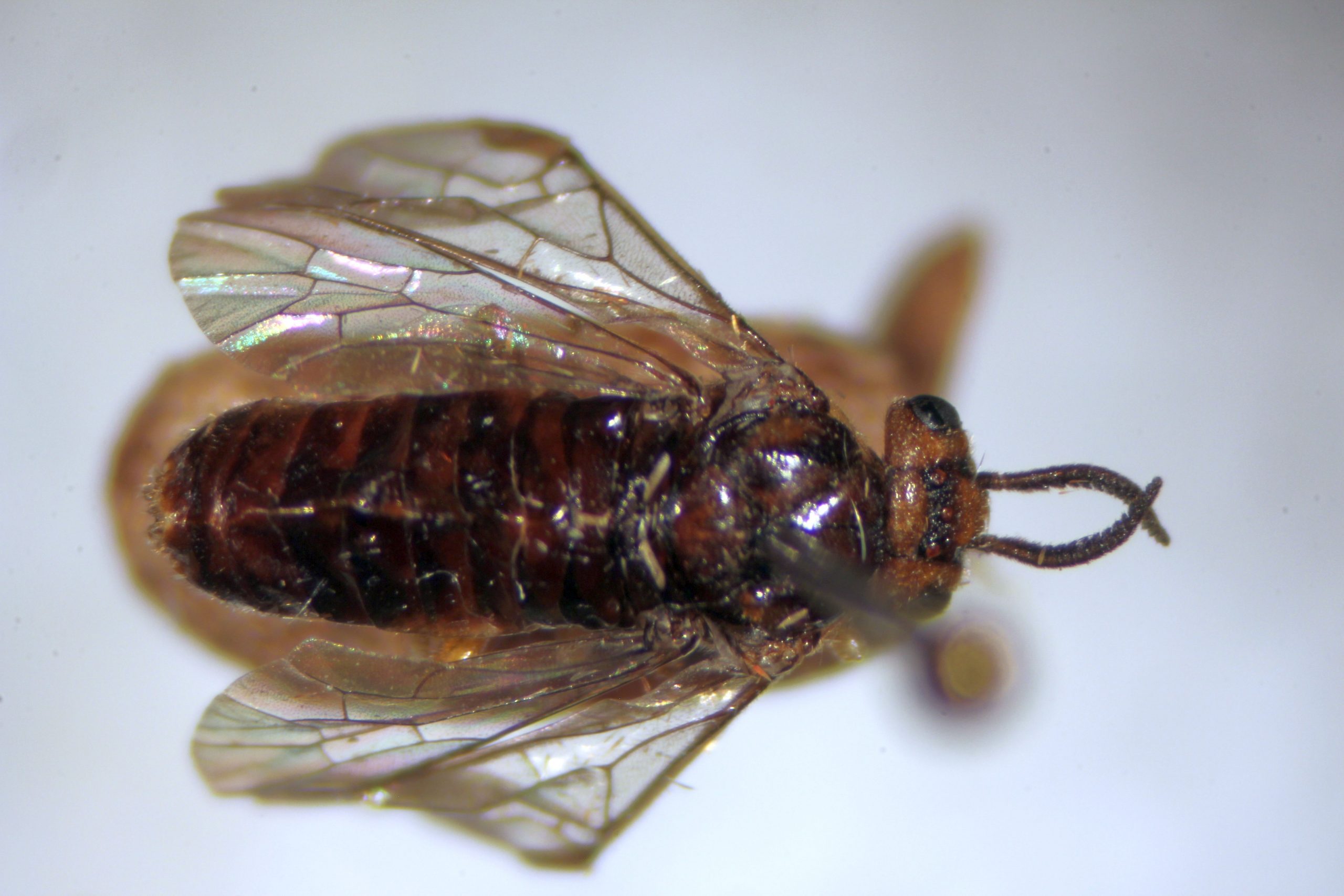
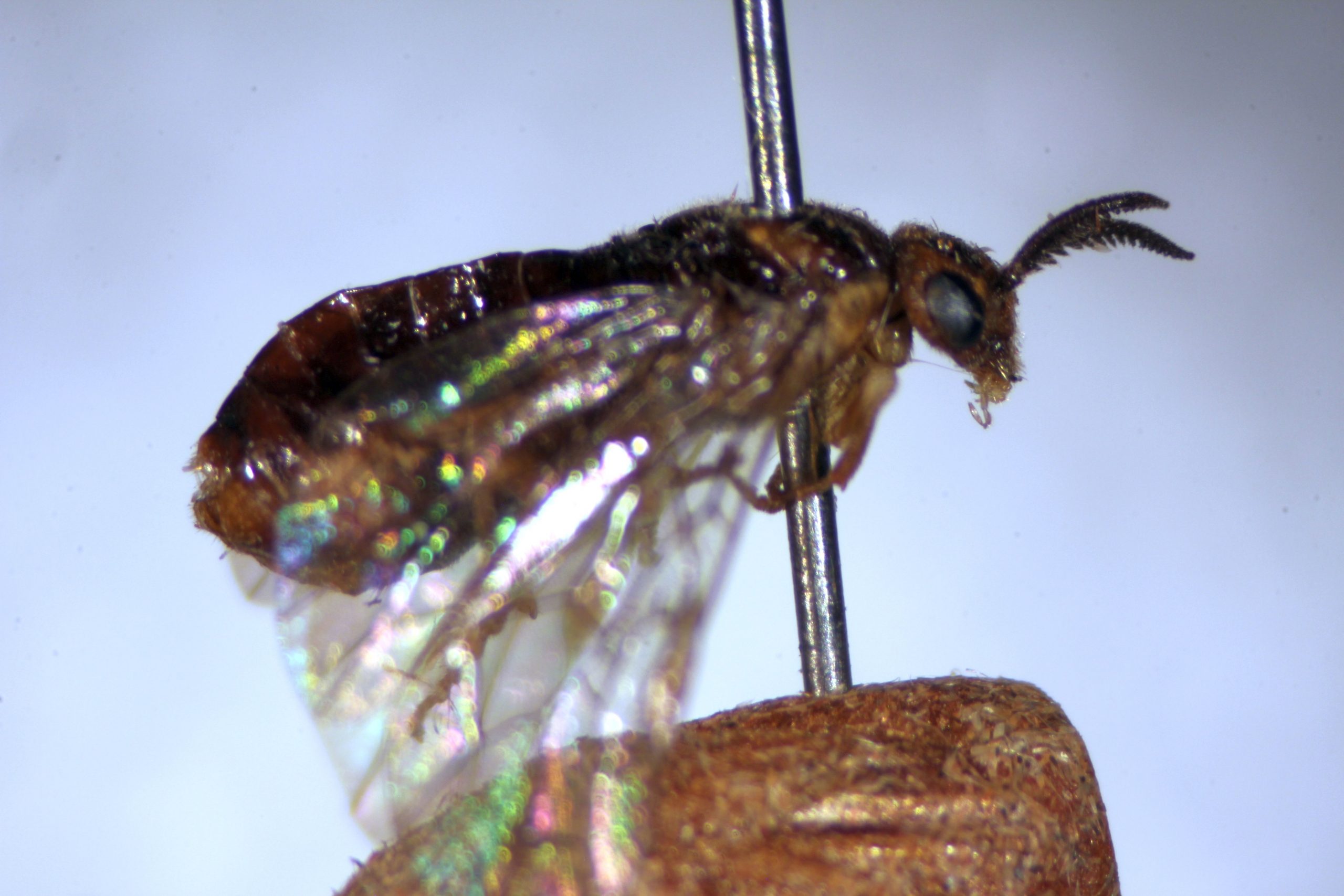
Tenthredinidae
Tenthredinidae, or common sawflies, is the largest group of sawflies, with over 7500 species worldwide. Adult females generally use their ovipositors to cut small slits in leaves or twigs. Eggs are then deposited in the slits, and the larvae defoliate the host plants. Both oviposition and the subsequent feeding damage by larvae can cause substantial damage to host plants.
The larva shown here is an introduced species to North America that defoliates various Ribes spp.
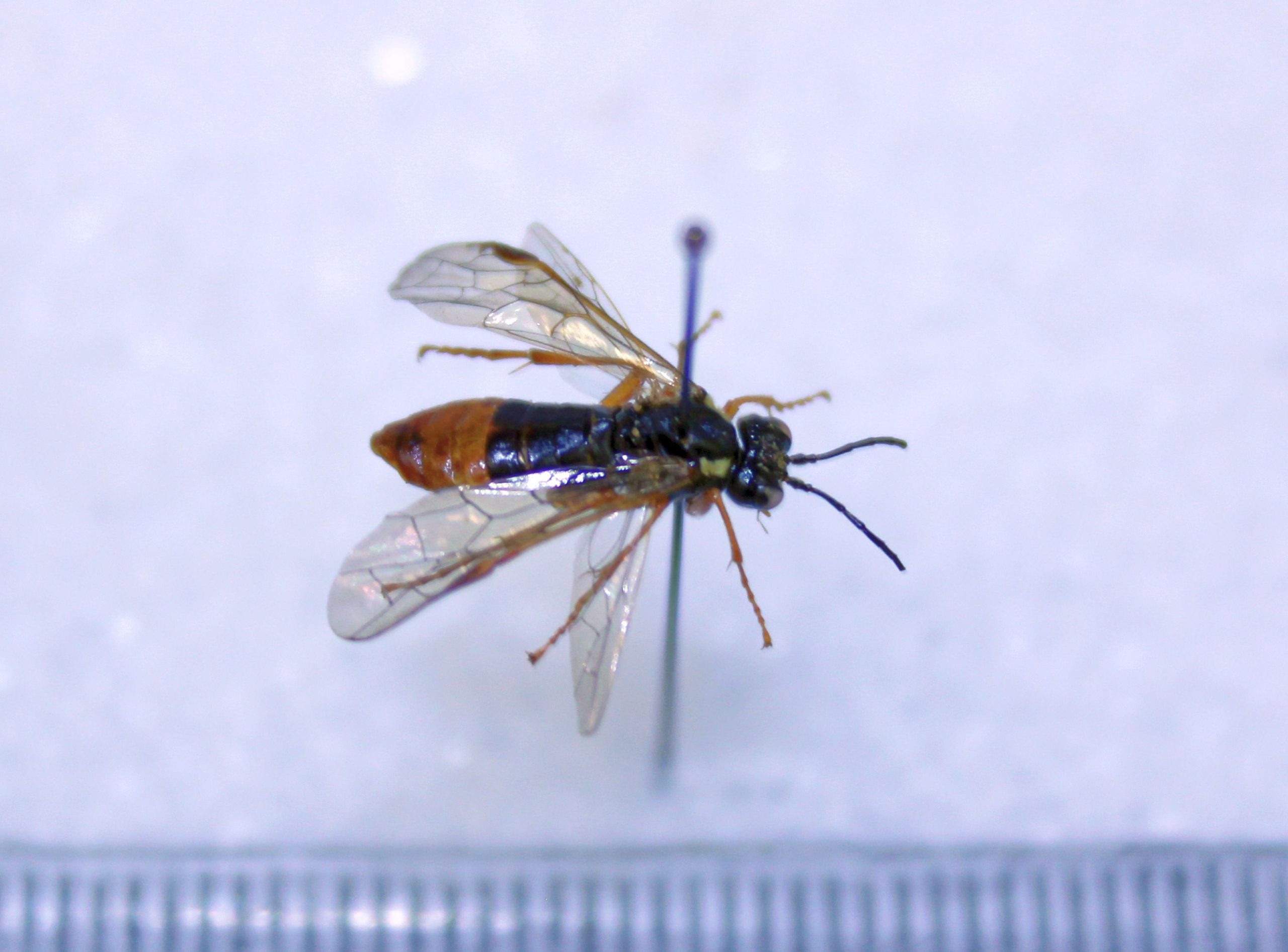
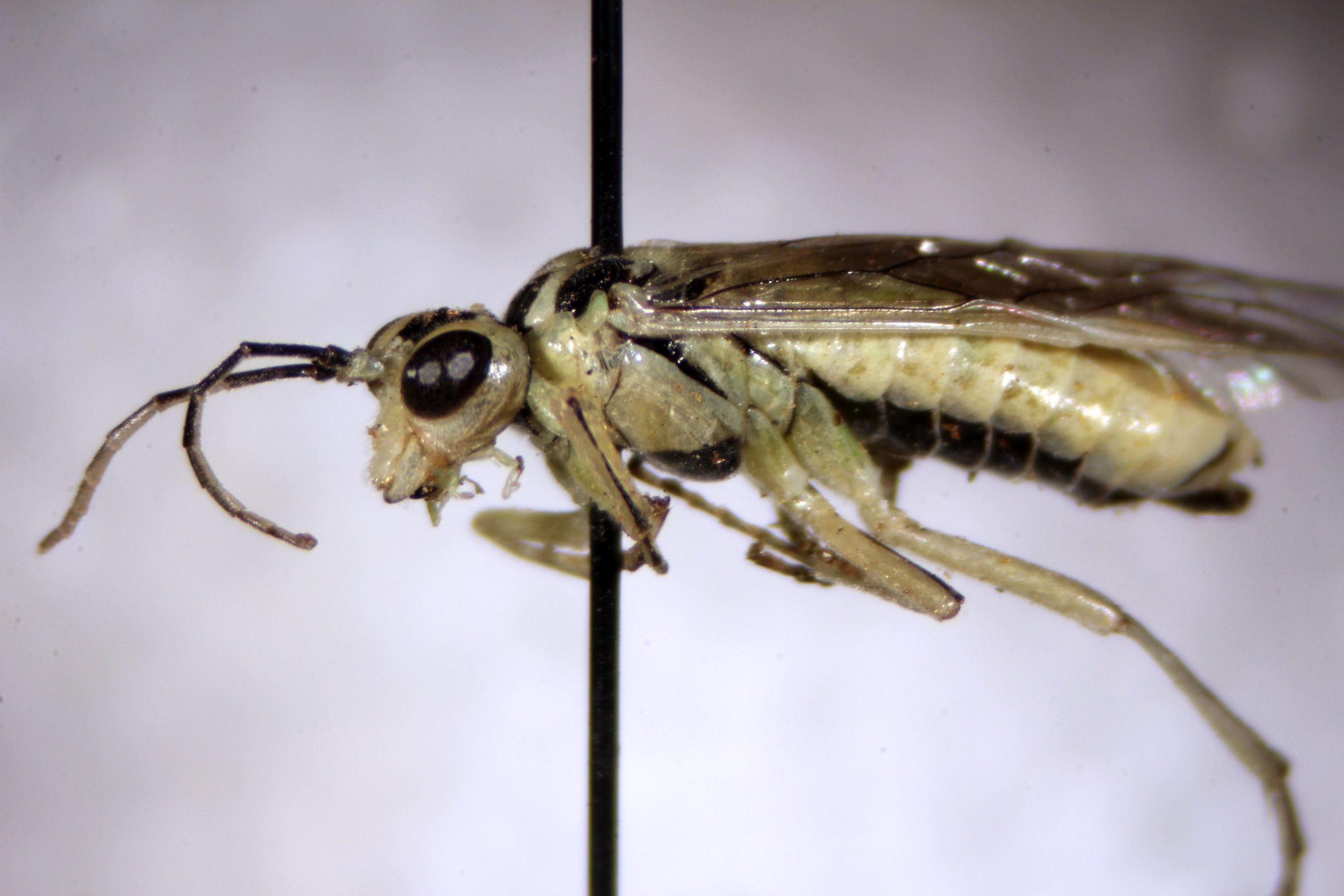
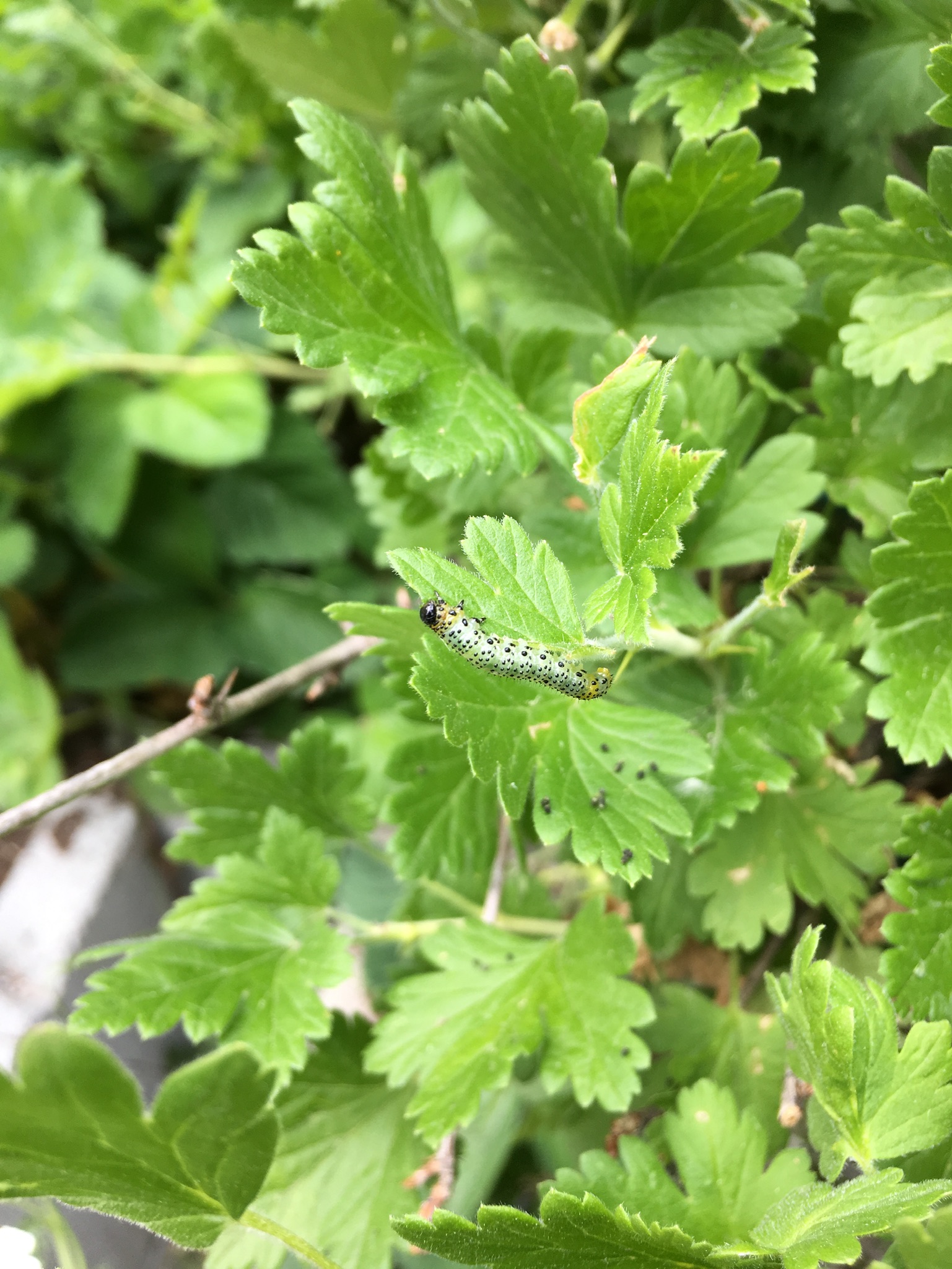
Cimbicidae
Cimbicidae are the cimbicid sawflies. They are large, heavy-bodied insects. The larvae resemble large caterpillars, and mostly feed on deciduous trees and shrubs. Adults have clubbed or knobbed antennae. The elm sawfly, Cimbex americanus, is occasionally found in the Prince George area. Larvae can be found after a windstorm near parts of town with elms, and can be green or even red to orange, with a black dorsal stripe. Adults are sometimes mistaken for northern giant hornets, and reported as exotic species.
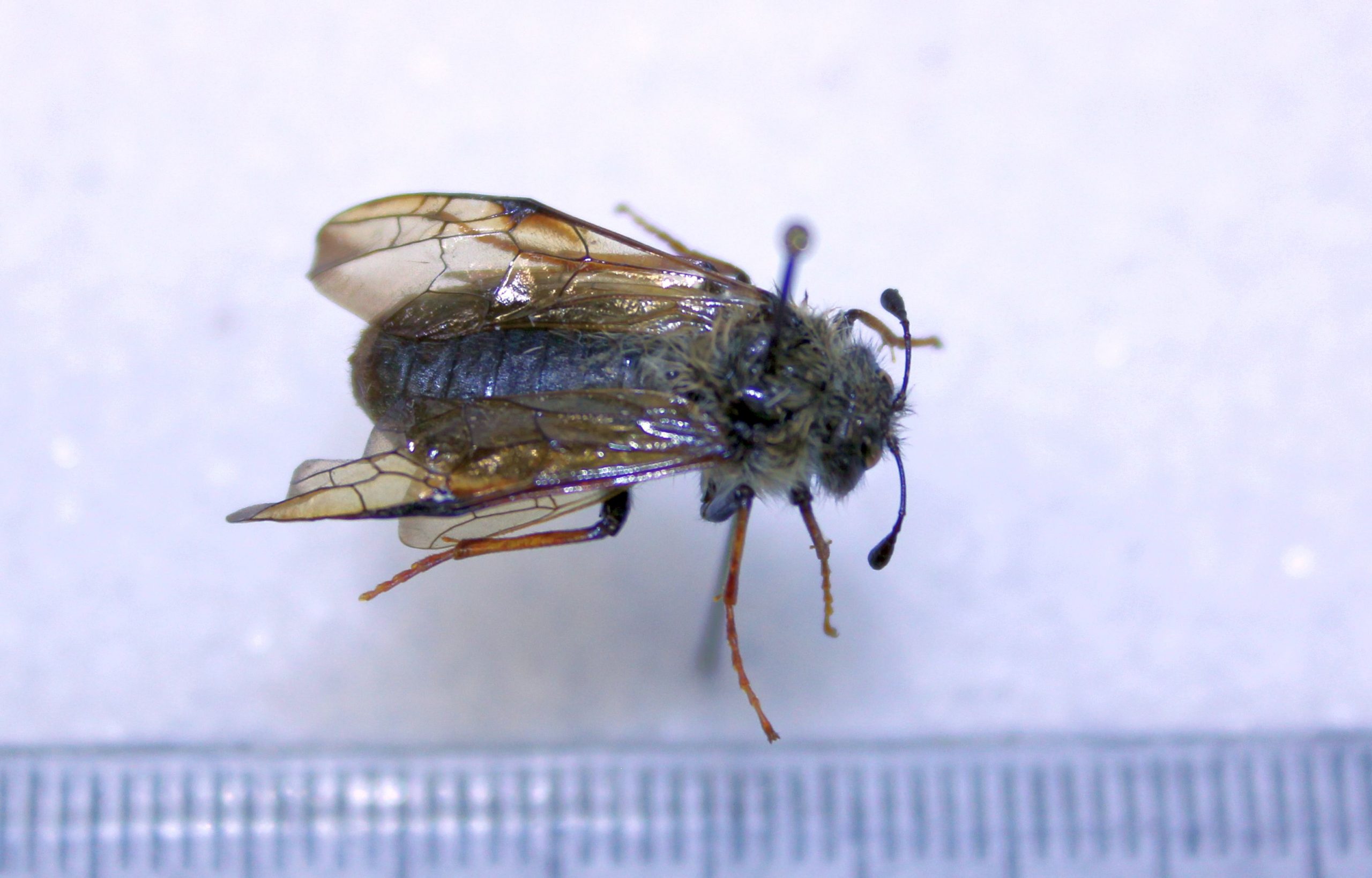
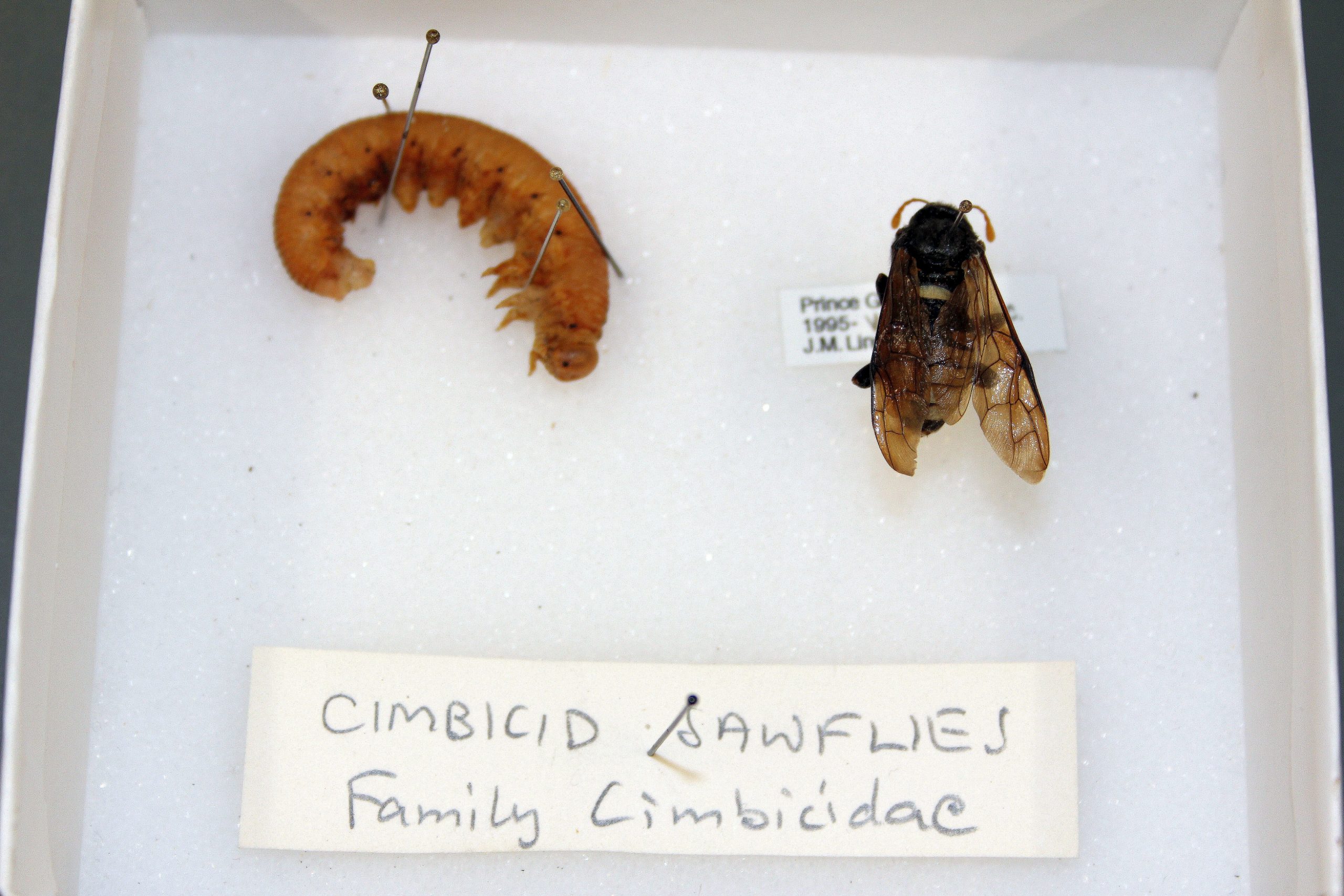
Siricidae
The last family of Symphyta that we will cover is Siricidae, the horntails or wood wasps. Again, these are fairly large, robust insects, and are sometimes mistaken for giant hornets. They oviposit in wood, often in trees that have been killed or damaged by fire. Wildfire crews often encounter them poking their ovipositors into crevices in the bark of burned stumps. Adults have a pronounced “horn” on the tip of the abdomen, above the ovipositor and present in both males and females. Larvae bore in wood, and some species are severe pests of timber and wood in service. They are also easily moved around, so exotic species are always a concern.
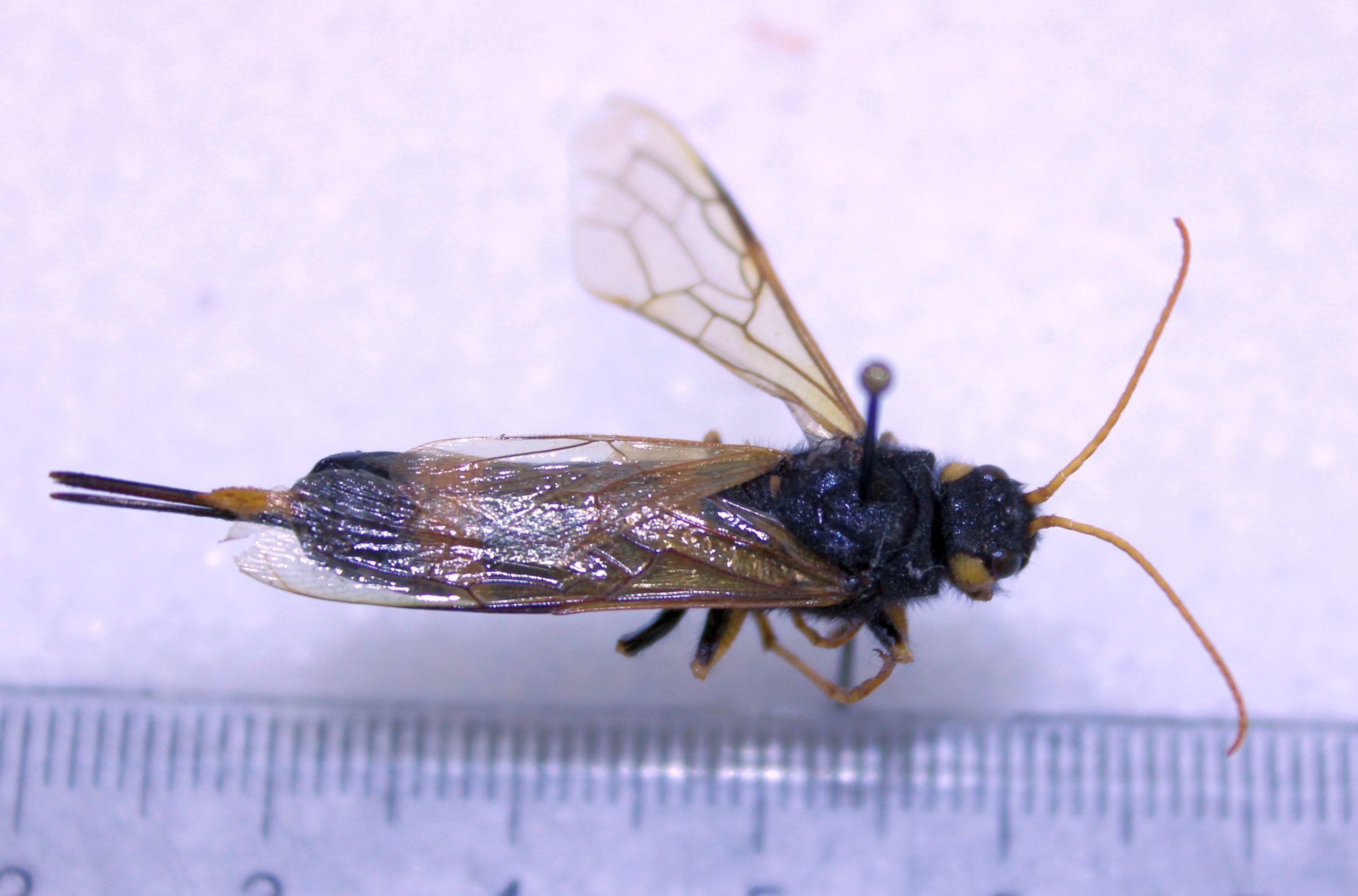
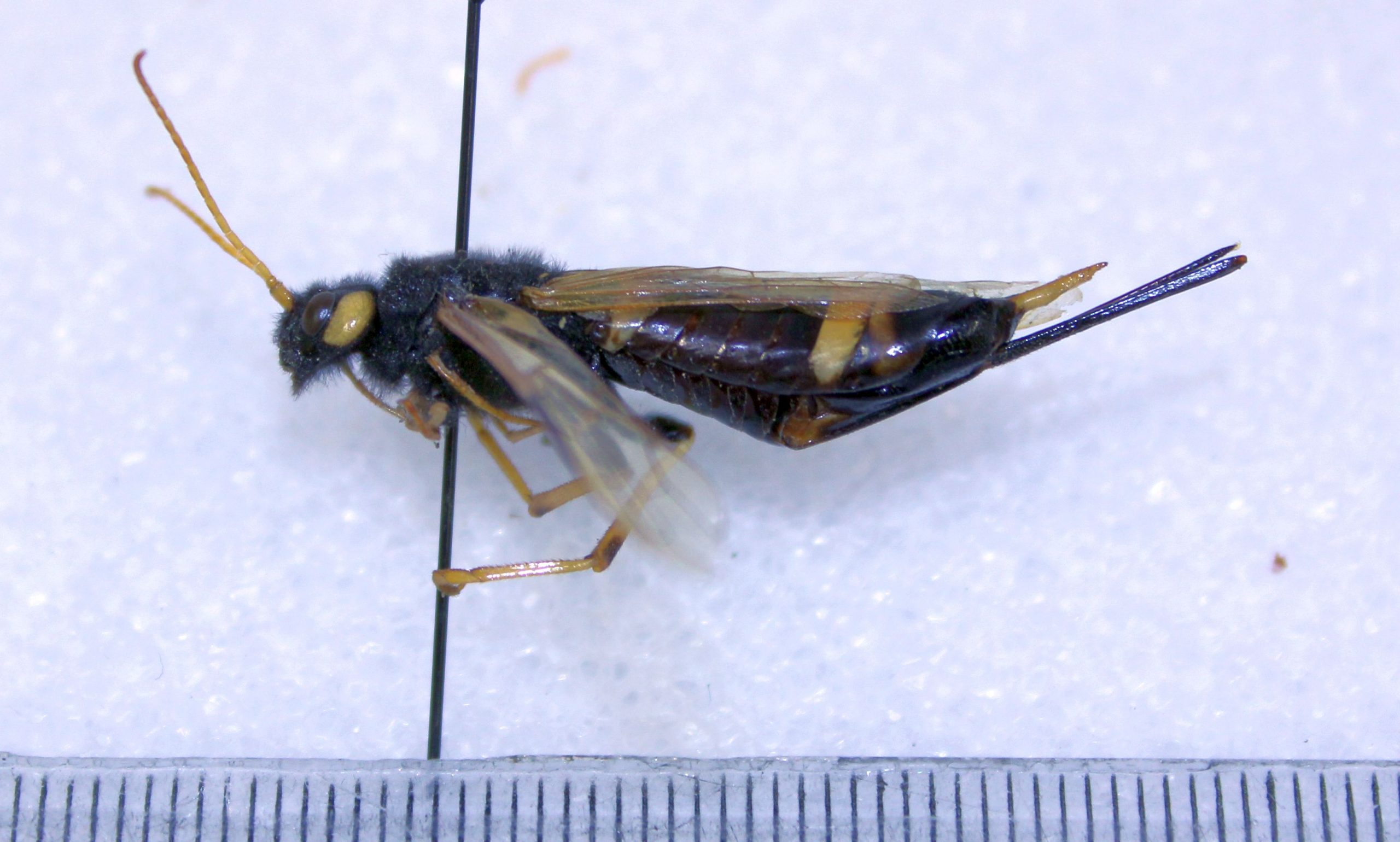
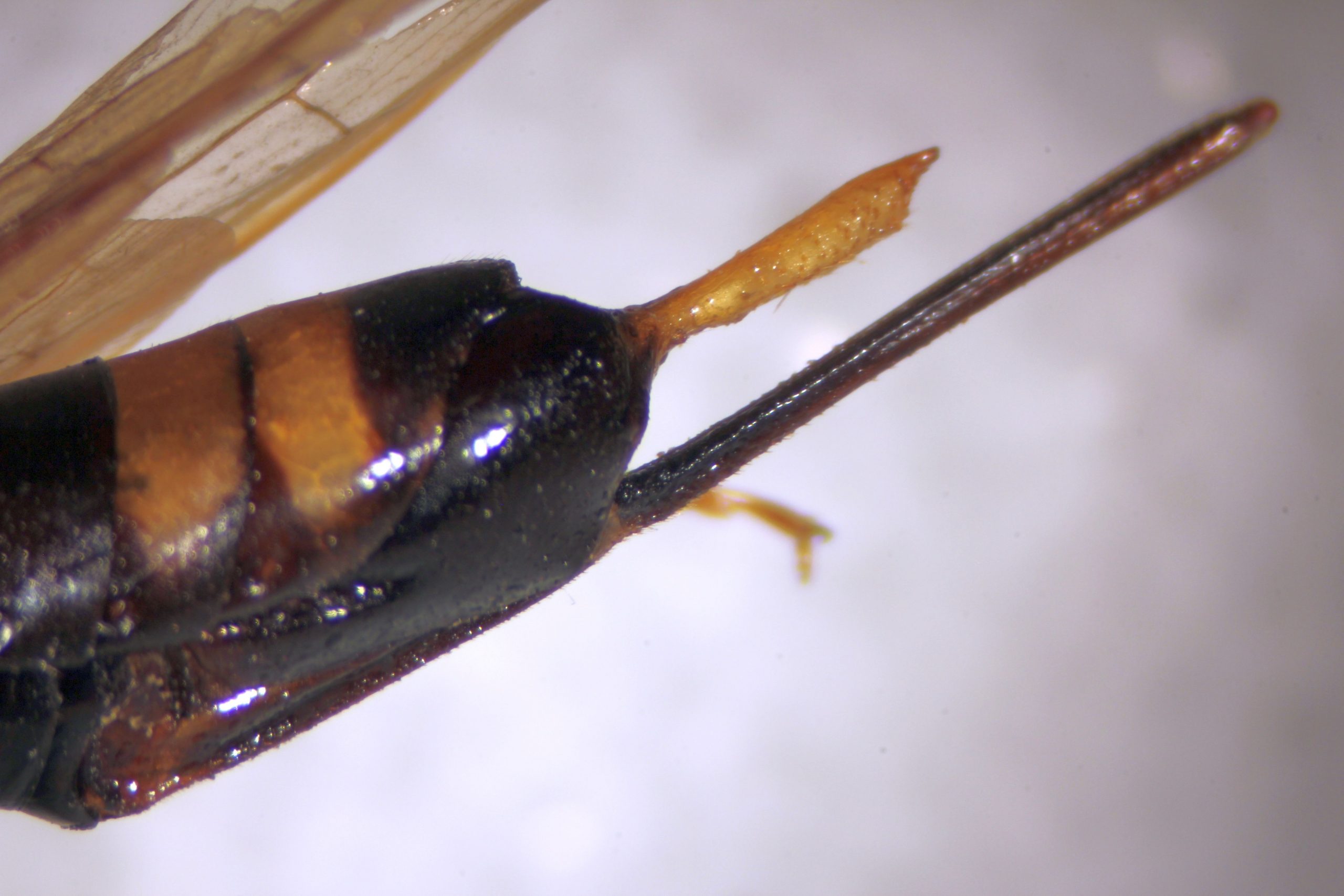
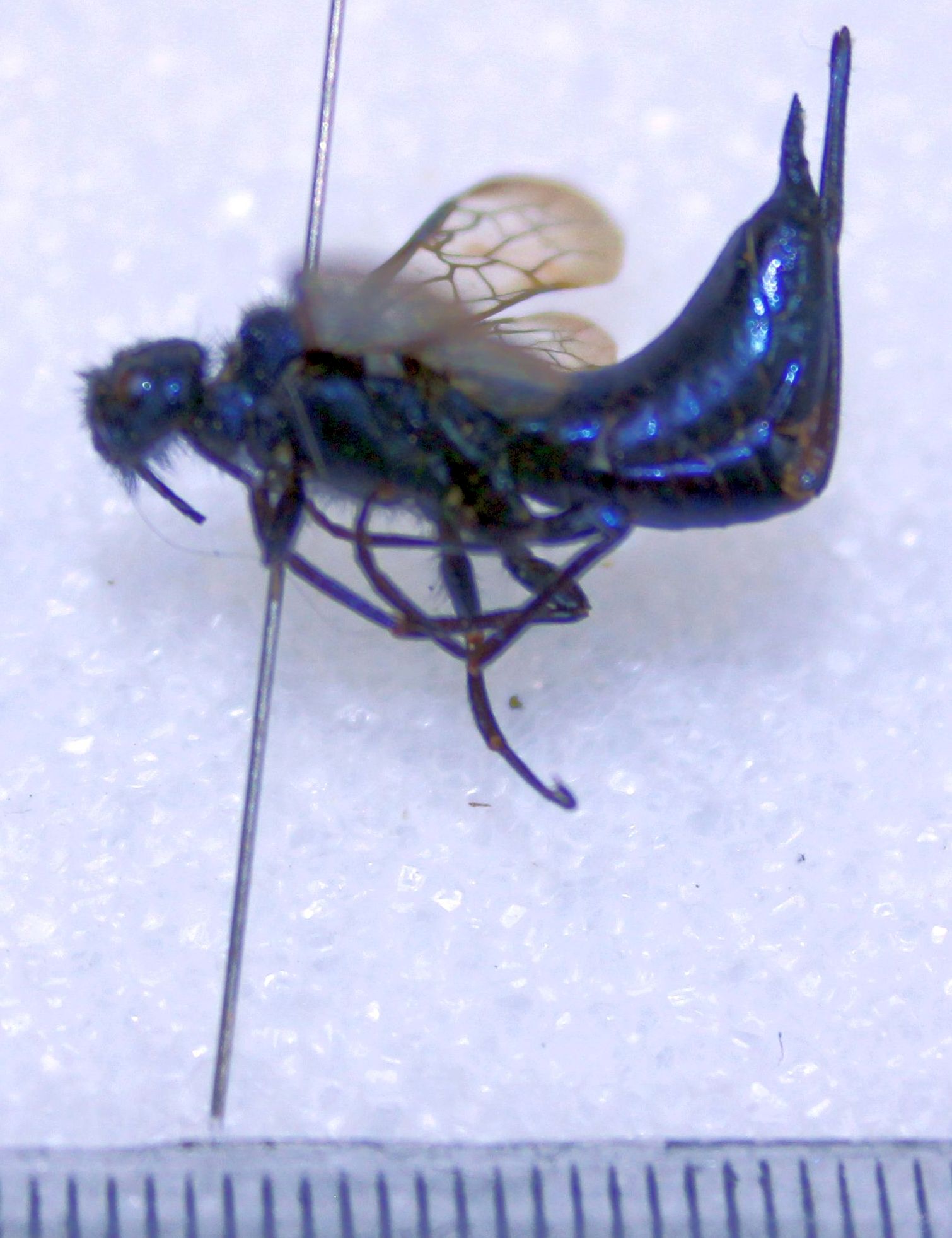


Feedback/Errata